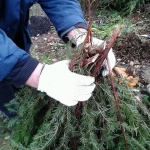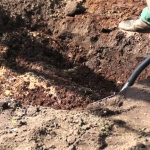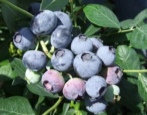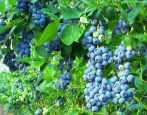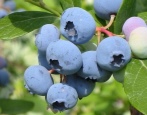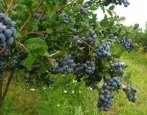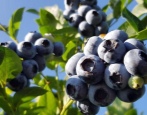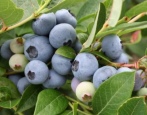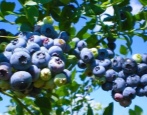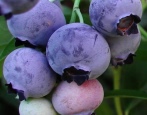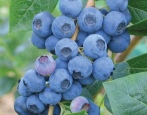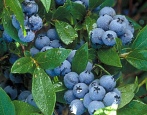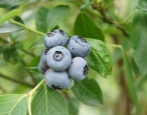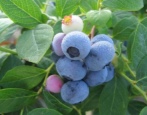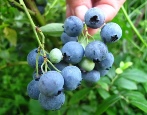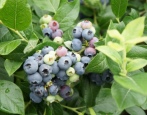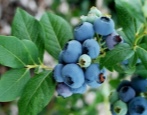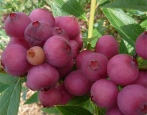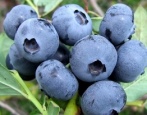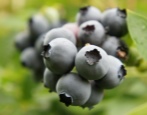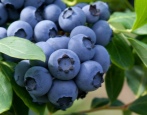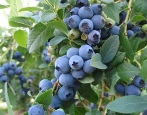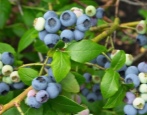
- Authors: James Findley Hancock (Michigan State Research University)
- Appeared when crossing: Brigitta x Elliot
- Year of approval: 2017
- Ripening terms: late ripening
- Growth type: medium-sized
- Bush height, m: 1-1.5
- Taste: sweet
- Yield: stable
- Average yield: 153 c / ha
- Fruit size: small
Blueberry Aurora is considered one of the best varieties of American selection. But she feels great on Russian soil as well.
Breeding history
The origins of the culture have long-standing American roots. The plant originates at the experimental stations of Michigan State Research University. Here, according to the breeding program, for 11 years, scientists conducted laboratory research to develop a new blueberry variety. As a result, in 1997, the first Aurora seedling was obtained by crossing the varieties Elliot and Brigitta. The new culture took all the best properties from the parental forms, acquiring frost resistance, later ripening, and also improved the taste of the fruits. In 2004, Aurora was patented. In a short time, blueberries with such a beautiful name have gained immense popularity; they are now grown all over the world, far beyond America's borders. And in 2017, it was even included in the State Register for the Russian Federation and zoned for most regions of Russia.
Description of the variety
Blueberry Aurora belongs to the heather family, and such crops often live up to their centenary. The bushes are medium-sized, the height is no more than half a meter. Medium spreading branches form a crown, the diameter of which reaches 1.3 m.
Green shoots grow straight, they are shiny, there is no pubescence on them. The buds are colored in a light tone, the leaf blades are bare, medium. The sheet itself is oval, with a straight base. Fruit clusters are also medium and straight, without pubescence.
Fruit characteristics
Aurora blueberries are small, with an average weight of 1.5 grams, the maximum weight being 2.1 grams. Rounded in shape, there is a small scar, painted in blue-violet, close to black tone.
Taste qualities
The taste of Aurora blueberry is sweetish, there is a light aroma. In fruits:
- sugar - 15.4%;
- acids - 1.7%;
- vitamin C - 19.9%.
The universal purpose of fruits involves fresh consumption as a dessert, use in cooking and canning.
Ripening and fruiting
Aurora is distinguished by a late ripening period, the fruits can be removed from mid-August to the second half of September. The culture begins to bear fruit from the third season after planting the seedling.
Yield
According to the originator, the average crop yield was registered at the level of 153.0 c / ha. In the first few years, the yield is low: 1-5 kg are removed from one bush, but it increases every year. The most productive are 5-8 seasons of blueberry growing season.
Growing regions
For the Michigan Aurora, Russian regions with long summers and long and warm autumn are suitable. This, for example, may be the Krasnodar Territory, Rostov and Voronezh regions. Gardeners in the south and in the center of the country can grow blueberries without winter shelter, with a good layer of mulch. Summer residents in the Urals, Siberia and the northern regions will need to think about a reliable winter shelter.
Growing and care
Blueberry Aurora loves the sun, does not tolerate drafts and wind, therefore, in the garden or in the garden, it is necessary to allocate an appropriate place for it.To protect it from the wind, the site can be surrounded by a fence or a living wall of trees or shrubs can be planted on it. Aurora feels good exclusively on acidic soil. The ideal composition of the soil mixture for this culture involves sand, peat, coniferous litter from the forest in the form of sawdust, bark, and conifer chips.
Blueberry seedlings can be planted in planting holes, grooves, as well as in spacious containers (from 100 liters). Pits 0.8 m in diameter and 0.4 m deep are covered with soil mixture. After planting, the bushes need to be watered, and organic mulch should be laid on top. With any option for planting American blueberries, the root collar of the plant should not be immersed in the soil by more than 7-8 centimeters.
Pruning can be carried out from 2 years of age, removing broken and dried branches. On an older plant, the lower branches are cut off, as are the shoots that have become superfluous. Do not forget about top dressing and regular watering of plants.
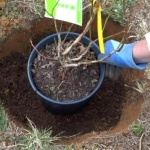
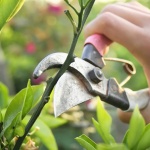
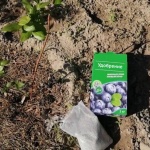
Disease and pest resistance
A guest from Michigan has a fairly strong immune system, so he is rarely affected by ailments and attacks of insect pests. However, there are cases of gray rot diseases.
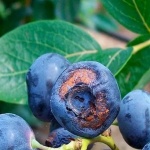
Winter hardiness and the need for shelter
Aurora's frost resistance is quite high. The variety can withstand temperatures as low as -34, which makes it possible to cultivate it in the harshest conditions. However, in the middle lane and to the north, it is worth providing the bushes with mulching, as well as winter shelter.
